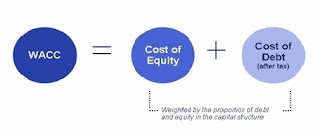- Home
- About Us
- Services
- Online Assignment Help
- Auditing Assignment Help Service
- Nursing Assignment Help
- Excel Assignment Help
- Advanced Economics Homework Help
- XML Assignment Help
- Strategic Management Assignment Help
- Logarithm Assignment Help
- Probability Assignment Help
- Matrices Assignment Help
- Commercial Bank Management
- Thesis Proposal Help
- Corporate Strategy
- Electrical Engineering
- Civil engineering
- Mechanical Engineering
- Electronics Engineering
- Financial Plan Development
- Research Paper
- Political Science Assignment Help
- Operations Management Assignment Help
- Computer Vision Assignment Help
- Commercial Bank Management
- IT Security Assignment Help
- College Essay Help
- Term Paper Help
- Medical Science Assignment Help
- Nursing Thesis Writing Help
- Religion
- Thesis Help
- Supply Chain Management Assignment Help
- Australia Assignment Help
- Cause and Effect Essay
- International Finance Assignment Help
- Statistics Assignment Help
- Computer Science
- Information Technology
- Bioinformatics Assignment Help
- Biostatistics Assignment Help
- Excel Assignment Help
- Taxation
- Research Proposal Help
- SAASU Assignment Help
- Auditing Assignment Help Service
- Workplace Learning in Finance
- Dissertation & Homework Help
- Custom Essay Writing Help
- Online Assignment Help
- Reviews
- Tutors
Periodic Table in Chemistry
The table in which the elements are arranged in the increasing order of their atomic number is called periodic table. The similar properties which recur after a regular interval are called the periodic properties. Several attempts were made to classify the elements so as to make their study simple and systematic. J.W. Dobereiner arranged the elements in the group of three called triads. According to this, the chemically similar elements were arranged in the increasing order of their atomic weights in the group of three to make a triad. It was noted that the atomic weight of middle element present in a triad is the mean of the other two elements.
Triad of alkali metals – lithium, sodium and potassium have atomic weights 7, 23 and 39 respectively. By taking the arithmetic mean of lithium and potassium we get the atomic weight of sodium as 7+39/2 = 46/2 = 23.
Triad of halogens – chlorine, bromine and iodine have atomic weights 35.5, 80.4 and 126.5 respectively. By taking the arithmetic mean of chlorine and iodine, we get the atomic weight of bromine as 35.5 + 126.5/2 = 81
Triad of alkaline earth metals – calcium, strontium and barium have atomic weights 40, 88 and 137 respectively. By taking the arithmetic mean of calcium and barium, we get the atomic weight of strontium as 40+ 137/2 = 88.
This classification was not accepted as many elements could not be grouped in triads. For very low mass or for very high mass elements, the law was not holding good, eg. F, Cland Br. Atomic mass of Cl is not the arithmetic mean of atomic masses of F and Br.
In periodic table the vertical lines are called groups and the horizontal lines are called periods. Mendeleev suggested the periodic law, ie., the physical and the chemical properties of elements are the periodic functions of their atomic weights.
Mendeleev’s periodic table had certain defects:
Position of hydrogen: Hydrogen had a controversial position, i.e. it was placed in two groups, group 1 (alkali metals) and group 17 (halogens).
- Position of isotopes:
- Position of transition elements:
- Position of rare earth metals:
When Mendeleev presented his periodic table inert gases were not discovered, he easily placed these elements at the end of the table without disturbing the table.
The elements which were discovered later could be easily placed in the gaps provided in the table.
The most accepted form of periodic table is the long form of the periodic table. In 1913 Mosley modified the previous periodic law as it states that the physical and the chemical properties of the elements are the periodic functions of their atomic number. As Mosley found that the atomic number (i.e. the number of protons) is more fundamental property of an atom than its atomic weight.
On the basis of the modern periodic law proposed by Mosley, the long form of Modern or Bohr’s periodic table was prepared, which consists of 18 vertical lines (groups) and 7 horizontal lines (periods). In the long form of periodic table the elements having same number of valence electrons are placed under the same vertical columns called groups.
- The different characteristics of the long form of the periodic table are given below.
- The highly metallic elements are placed on the left hand side of the periodic table.
- The highly non-metallic elements are placed on the right hand side of the periodic table.
- The transition elements are accommodated between metals and non-metals.
- The noble gases are placed in group 18.
- The elements present in the left and right side of the vertical columns are called normal elements or responsive elements. The elements having complete penultimate shells are called normal elements or the representative elements.
- Lanthanides and Actinides are placed outside the main body of the periodic table.
- The seventh period is an incomplete period.
The elements present in different groups are given specific names like
| Group Number | Name |
| 1 | Alkali Metals |
| 2 | Alkaline earth metals |
| 17 | Halogens |
| 18 | Inert Gases or Noble Gases |
The horizontal rows are called periods.
- First period is the shortest period having only 2 elements.
- Second period is a short period consisting of 8 elements.
- Third period is a short period consisting of 8 elements.
- Fourth period is a long period consisting of 18 elements. Ten elements are of transition series and eight elements are normal elements.
- Fifth period is a long period consisting of 18 elements. Eight are normal elements or representative elements and ten are transition elements.
- Sixth period is a very long period consisting of 32 elements. It includes eight normal or representative elements, 10 transition elements and 14 inner transition elements of lanthanide series.
- Seventh period is an incomplete period.
- As we move down the group, the basic character of oxides increases.
- As we move across the period, the acidic character of oxides increases.
- At the end of every period there is a presence of an inert gas with octet configuration.
- Inert gases have zero valency as they can neither lose electron nor they can gain electron as they have a complete octet.
- Metals have 1,2 or 3 electrons in their valence shell.
- Metals can easily lose their outermost 1, 2 or 3 electrons to complete their outermost octet hence they act as reducing agents.
- Non-metals have 5, 6 or 7 electrons in their valence shell.
- Non metals lose electrons to form positively charged particles called cations where as non metals gain electrons to form negatively charged particles called anions.
For more details you can visit our websites at https://www.helpwithassignment.com/chemistry-assignment-help





